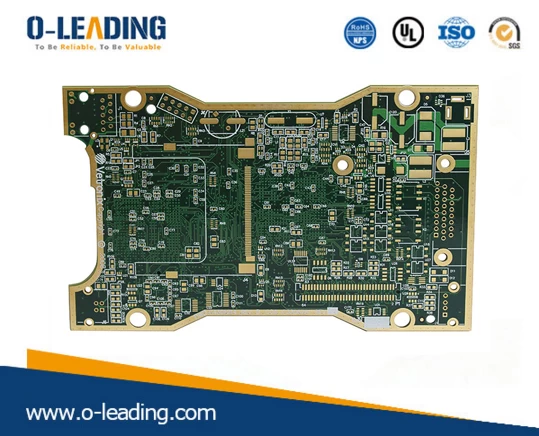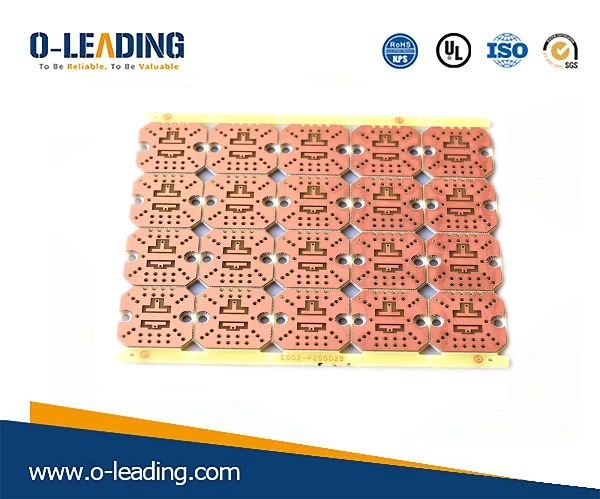What are the common glues for PCB fixing components
1.Red gum
Red gum is a polyene compound that is prone to curing after being heated. When the temperature it reaches reaches the freezing point of 150 ° C, the red gum starts to change from a paste into a solid. Using this feature, you can use dispensing or printing The components of the chip are fixed in a manner such that the circuit board components use chip red glue to be cured by heating in an oven or reflow soldering.
The components on the circuit board, especially the double-sided mounted circuit boards, are fixed with the patch red glue when wave soldering, so that the small-sized chip components on the back will not fall into the tin furnace.
Red gum has several characteristics:
Stable adhesive strength can be obtained for various chip components;
It has the viscosity and shake resistance suitable for the requirements of screen printing, and the glue volume is stable without missing brushes or tower edges;
Has good storage stability performance;
It has high adhesive strength, which can avoid component displacement during high-speed placement.
The main role of the red glue is to fix the circuit board patch components, which mainly have an adhesive effect, or use it with solder paste as a reinforcing and fixing effect.
2. Yellow gum
The yellow glue used for circuit boards is a water-based adhesive with a pungent odor. It is a soft, self-adhesive gel. It has excellent insulation, moisture resistance, shock resistance and thermal conductivity. The device operates safely under harsh conditions.
It is prone to curing. The curing speed is related to the ambient temperature, humidity, and wind speed: the higher the temperature, the lower the humidity, the greater the wind speed, the faster the curing speed, and the slower the other way. When the painted parts are placed in the air, they will slowly crust. Note that the operation should be completed before the surface is crusted.
Main role: Fixing electronic products such as inductors, coils, transformers, electrolytic capacitors, and receivers. It has the function of protecting and sealing electronic components. It can be used for potting of electrical components, potting of high-voltage parts, and moisture-proof coating of circuit boards.

3. Thermally conductive silicone
Thermal silica gel, also known as thermal paste and thermal paste, is a highly thermally conductive, insulating silicone material that is almost never cured. It can be used for a long time at a temperature of -50 ° C to + 250 ° C. It has both excellent electrical insulation and excellent thermal conductivity. At the same time, it has low oil separation (toward zero), high and low temperature resistance, water resistance, ozone resistance, and weathering resistance. Its characteristics are non-toxic, odorless and non-corrosive, in line with ROHS standards and related environmental protection requirements, and stable chemical and physical properties.
Main function: It is used to fill the gap between the heating element and the heat sink, and increase their contact area, so as to achieve the heat conduction effect, so that the heat of the electronic components can be efficiently emitted and transmitted.
It is widely applied to the contact surfaces between heating elements (power tubes, thyristors, electric reactors, etc.) in various electronic products and electrical equipment and heat dissipation facilities (radiation fins, heat sinks, casings, etc.) to conduct heat transfer. The effect of the medium can improve the heat dissipation effect.
4.Silicone glue (glass glue)
Silicone glue is similar to an ointment and will solidify into a tough rubber-like solid material upon contact with moisture in the air. Silicone glue is commonly used as glass glue because it is often used for bonding and sealing in glass. The glue should be sealed and stored. The mixed rubber should be used up at one time to avoid waste.
Main role: Widely used in electronic modules, sensors, electronic components and other places where potting, insulation and flame retardant are required, as well as the bonding between electronic components and the insulation between fixed components.

With the rapid development of science and technology, electronic products are becoming more and more sophisticated, and higher requirements are placed on materials, processes, product design, structure, and functions. For this reason, industrial adhesives are one of the indispensable industrial materials in the process of product assembly. Taking mobile phones as an example, there will probably be more than 160 glue points on an ordinary smartphone.
Industrial glue as a connection method has the following characteristics:
Light: It is different from tedious mechanical connections, such as riveting, screwing and welding, but uses resin-type bonding, which can effectively reduce the weight of the product and make the design more simple and practical;
Micro: In areas where mechanical and physical connections cannot be reached, industrial glue is fully capable of this challenge. The bonding area can be a few square millimeters, and the bonding gap can be micron level. It can fill, seal and protect narrow gaps perfectly. achieve;
Fast: UV bonding, a few seconds, or even 1 second directly achieve efficient curing, suitable for a large number of consumer electronics, while the energy consumption is relatively small;
Strong: The internal stress of the bonding process is small, and in most cases it is surface bonding. At the same time, industrial glue provides a strong bonding effect through the cohesion and surface bonding of the material;
Miscellaneous: Metal and metal, plastic and plastic, metal and plastic can all be adhered and fastened, and glue can also be used to achieve the functions of filling, encapsulation, protection, and fixing;
Because of the above-mentioned advantages of industrial bonding technology, it will play a more and more important role in modern manufacturing, replacing traditional technology more widely. The mixture is bonded together, The most basic role of bonding is the connection. However, in modern manufacturing, with the development of science and technology, people's expectations for the performance of glue, the role of glue, and the scope of application and adaptation of glue are getting higher and higher.

The continuous high integration, miniaturization, multifunctionalization and high power of electronic products have made energy consumption / heat management more and more prominent issues! These highly integrated components must not only be securely assembled on the PCB board, but the heat generated by their work must be quickly dissipated; sometimes a heat sink must be assembled on the surface of the component in order to cool down. In this case, thermal adhesive is the only choice. The thermal conductivity of glue can be understood from two different aspects: heat removal and heat absorption, such as glue glued to the heat sink should be able to quickly remove heat; and the thermal glue that protects the NTC temperature sensor should quickly absorb the heat, Passed to the chip. These are actually two aspects of the same problem. Therefore, the biggest problem of thermally conductive adhesives is the contradiction between the high thermal conductivity and adhesion fastness that are continuously pursued; and the thermally conductive particulate material added to achieve thermal conduction to the sizing process and adhesives. Effects of Water Rheological Properties.
































